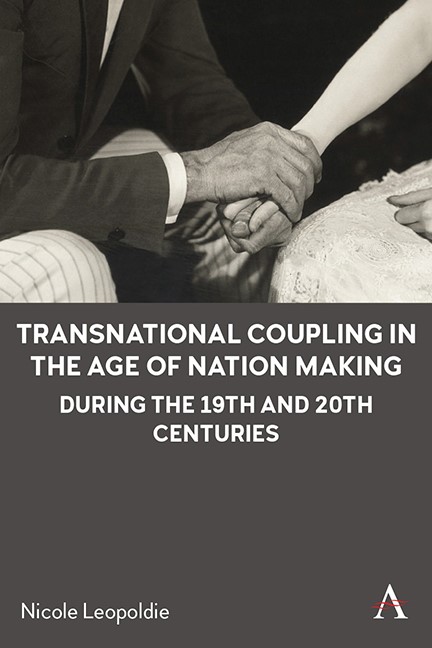Book contents
- Frontmatter
- Contents
- List of Figures
- Acknowledgements
- Introduction Marriage: National Borders and Personal Spaces
- Part I “Trading Titles for Treasure?”: Elite Marriages during the Nineteenth Century
- Part II “Paris is Free—and So Are Its Kisses”: Wartime Marriages during the Twentieth Century
- Conclusion
- Bibliography
- Index
1 - The Making of a Transnational High Society
Published online by Cambridge University Press: 15 November 2023
- Frontmatter
- Contents
- List of Figures
- Acknowledgements
- Introduction Marriage: National Borders and Personal Spaces
- Part I “Trading Titles for Treasure?”: Elite Marriages during the Nineteenth Century
- Part II “Paris is Free—and So Are Its Kisses”: Wartime Marriages during the Twentieth Century
- Conclusion
- Bibliography
- Index
Summary
This chapter is divided into four parts: In the first, I examine the making of elite transnational communities in the context of both nineteenthcentury economic development and transatlantic mobility. By adopting Thorstein Veblen’s concept of the American leisure class and applying it to a transnational context, I argue that a transnational high society developed as wealthy American travelers began to keep company with the aristocratic and diplomatic echelons of Europe, whose lifestyles appeared to resemble their own. The second part goes further to examine the cultural dimensions of this elite social network by examining the cultural rituals of their social events. Here, I argue that elite transnational social events such as costume balls and dinners came to serve as both a stage for Franco-American crosscultural encounters and a cultural mechanism for elite coupling. The third part examines the ways in which American women saw their own place within these elite transnational social networks. Through an examination of assertions of common socioeconomic belonging, I argue that rather than American social or status anxieties driving these marriages, it was instead a sense of social confidence or a confident assertion of elite position among members of elite transnational communities that facilitated them. Finally, the fourth part examines how legal questions around marriage and citizenship affected the extent to which participants saw themselves as marrying across national lines. Here, I conclude that a relative absence of nineteenth-century legal barriers further facilitated not only elite high society’s transnational existence but also cross-border coupling.
Emerging Transnational Communities
The emergence of the pattern of Franco-American titled marriages in the second half of the ninetieth century coincided with two interconnected developments that facilitated both movement and encounter: First, technological developments of the Industrial Revolution made transoceanic steam travel between Europe and America safer, more comfortable, more rapid, and more frequent. The second was the development of what Thorstein Veblen calls the American leisure class. Identifying and associating with only those whose economic and social positions afforded them similar lifestyles, this leisure class was characterized by conspicuous consumption of luxury goods, increased leisure time, and travel for no other reason than to mark their prestige.
- Type
- Chapter
- Information
- Publisher: Anthem PressPrint publication year: 2023



